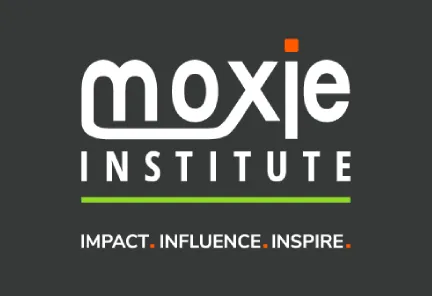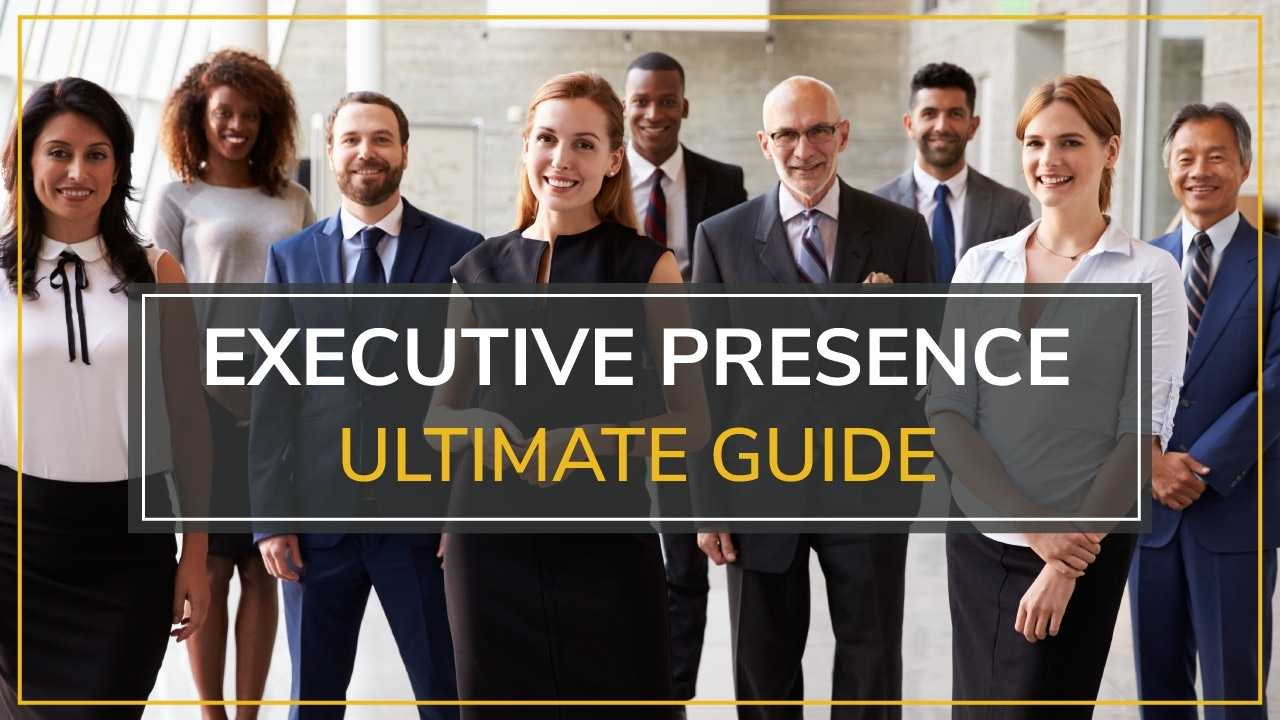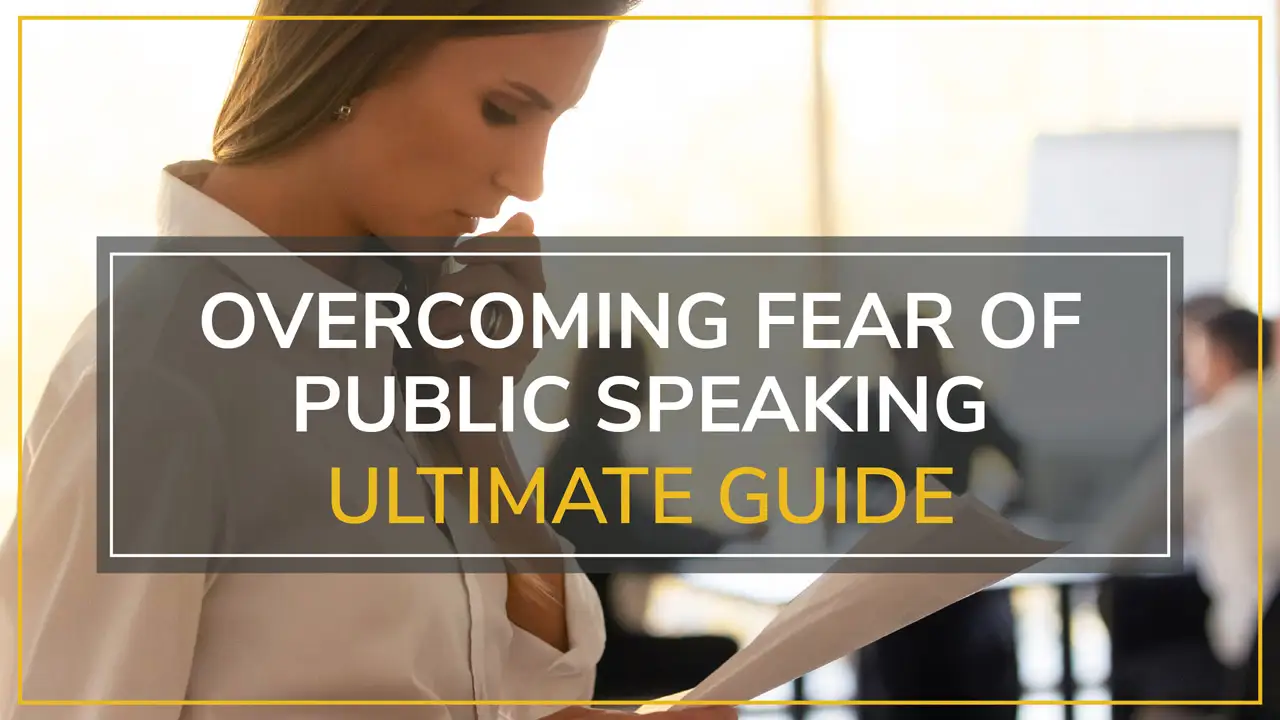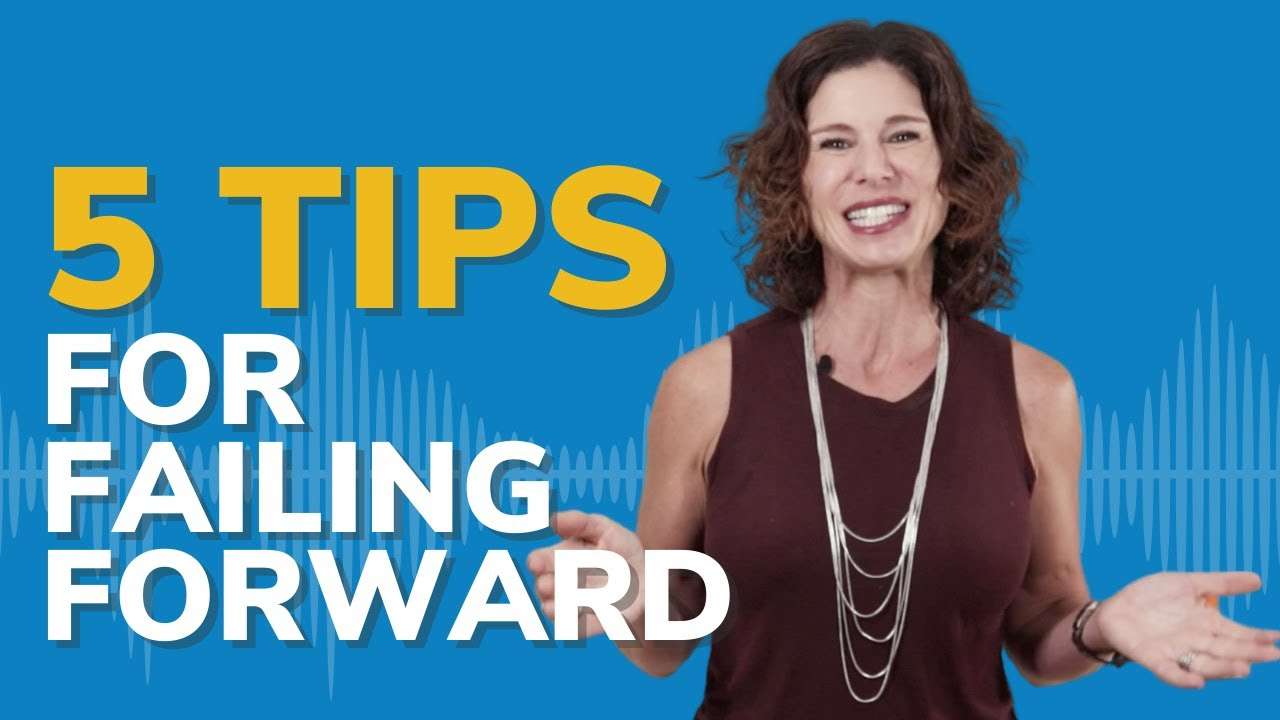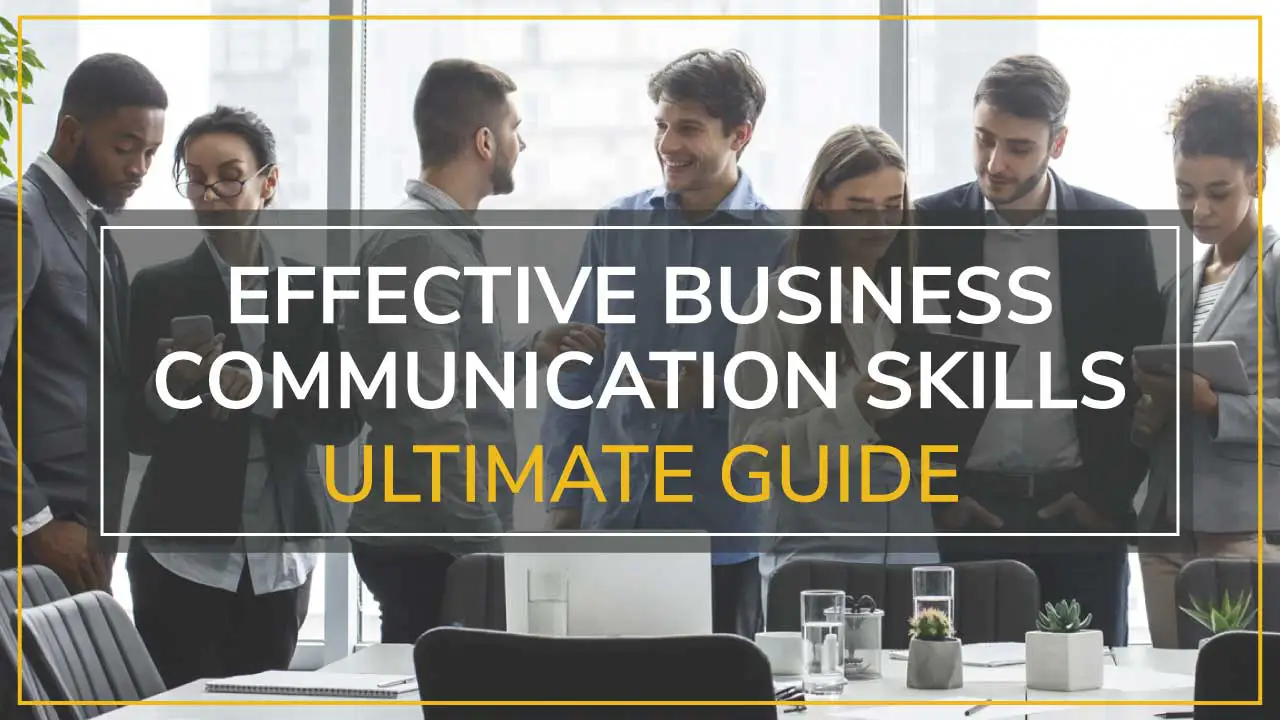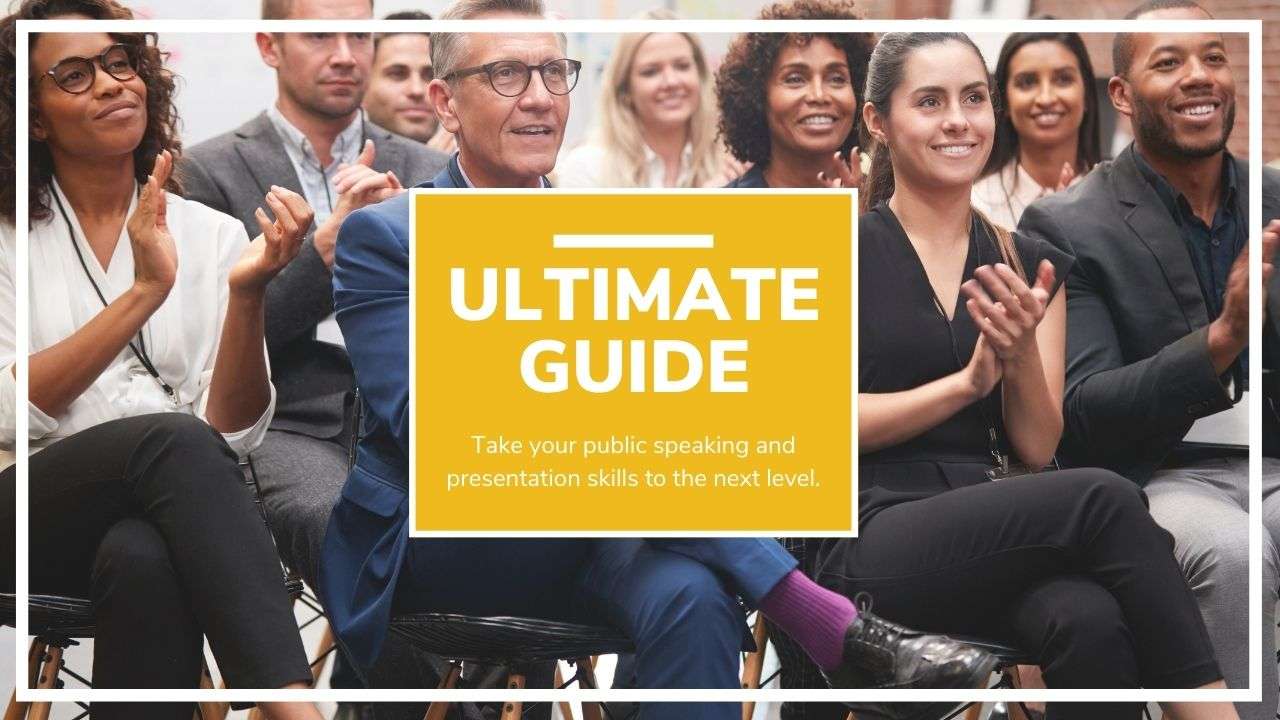Introduction: The Invisible Force That Transforms Leaders
What if I told you that within 30 seconds people have allocated a score in their head of whether they perceive you as leadership material upon entering a room? It’s a hard truth that many ambitious professionals learn too late: Technical acumen and years of experience don’t necessarily translate into executive presence.
Take Sarah, for example, who was a tireless VP of Operations at a Fortune 500 company. A proven, efficient executor, she could never get past being passed over for C-suite promotions. In boardroom presentations, her thoughts were frequently interrupted or attributed to her colleagues. The response was consistent: “Sarah’s very capable, but she just doesn’t have that executive presence.” Sound familiar?
Learning how to improve executive presence isn’t about becoming someone you’re not—it’s about magnifying the leadership traits that are already inside you and learning how to get people to pay attention, believe in you, and have things go your way. At Moxie Institute, we’ve worked with thousands of high-achievers who have changed their careers by cultivating what we call their leadership “IT” factor—that attractive charisma that makes people want to hear more when you talk and automatically trust your judgment.
Based on our neuroscience-supported methodology that integrates performance psychology, adult learning theory, and the stagecraft of the performing arts, we’ve learned that executive presence is, in fact, both teachable and trackable. This guide is simply going to reveal the exact tactics we use with Fortune 500 executives, showing you how you can command rooms, shape decisions, and motivate teams.
Whether you are preparing for your next promotion, elevating high-stakes presentations, or you just want to increase your professional impact, you will learn proven strategies that change how others see and respond to your leadership.
Understanding Executive Presence: More Than Just Charisma
Many professionals erroneously think executive presence is an inborn trait—that you either have it or you don’t. It’s a misunderstanding that’s kept innumerable aspiring leaders from taking the reins. From our work with hundreds of executives from many different industries, we have discovered that executive presence is actually a complex set of skills that can be developed methodically.
Executive presence is the competence that shows one is capable as well as trustworthy and inspiring. This is the difference between someone with a title that says they are a leader and someone who embodies leadership in every interaction.
The Neuroscience Behind Executive Presence
Recent research out of Harvard Business School shows how quick our brains are to judge who is a leader (literally within milliseconds of meeting someone new). Work in social neuroscience indicates that these snap judgments are informed by subtle behavioral features, such as posture, vocal tone, facial expressions, and patterns of movement.
What is even more interesting is that these same studies also show that we have the power to consciously change those perceptions with practice and awareness. This is where the science of leadership presence becomes incredibly powerful—it’s the chance to rewire how others see your capacity to lead.
Expert Insight: In our work coaching C-suite executives, we’ve learned that leaders who project powerful executive presence consistently exhibit three neurological patterns: greater emotional regulation, higher cognitive flexibility, and heightened social attention. These capabilities can be trained and practiced.
Why Executive Presence Matters More Than Ever
In today’s rapidly evolving business landscape, leadership styles have adapted more to influencing and inspiring as opposed to the older kind of command-and-control style. According to Gallup’s most recent research, teams that are led by high-presence executives demonstrate profits that are 23% higher and 18% higher productivity than those without.
If anything, the trend toward remote and hybrid work is actually making executive presence more important. At a time when physical contact is kept to a minimum, every virtual meeting, video call, and even presentation is a precious opportunity to show how you are fit to be a leader.
Quick Insight: Leaders with significant virtual executive presence have something we describe as “screen magnetism”—a knack for projecting power and commanding attention via digital channels at a distance as well as they can do it face-to-face.
The Three Pillars of Executive Presence
From our research and work with clients, we’ve pinpointed three critical components that make the backbone of a strong executive presence. These are not abstract ideas—they are concrete, measurable skills that can be systematically trained.
Pillar 1: Authentic Confidence
True self-assuredness is not the same as just having a big ego or fake self-confidence. It’s that underlying confidence that comes from being sure of what you’re capable of and still being genuinely interested in the other person’s point of view, interested in their ideas.
The Confidence-Competence Loop: According to our research of highly successful executives, genuine confidence arises from what we call the confidence-competence loop—a virtuous circle in which actual competence generates authentic confidence, which allows you to take on tougher challenges that in turn enhance your capabilities.
Working with our clients, we have discovered that genuine confidence appears in some very specific behaviors:
- Feel comfortable with strategic pauses – Leaders that lack self-confidence often feel the need to fill the silence
- Questions that demonstrate depth – They have asked good questions that make you think and demonstrate depth to their character and intelligence
- Elegant recognition of constraints – They easily admit when they don’t have an answer with genuine curiosity to acquire it
- Steady emotional control – They hold it together under stress and demonstrate a healthy range of emotion
Professional Development Insight: One CEO we coached drove her board effectiveness up by 40% from simply learning to pause three seconds before answering difficult questions. This little difference exuded deliberation and discipline instead of impulsiveness.
Pillar 2: Compelling Communication
To have executive presence, you need to be able to communicate complex ideas clearly, passionately, and precisely. That goes well beyond mere presentation skills and encompasses the full range of leadership communication skills that get people to act and deliver results.
The Three Levels of Communication Mastery:
- Technical Communication – Relating information and data precisely
- Strategic Communication – Linking data to more holistic business insights
- Inspirational Communication – Connecting strategy with human motivation and organizational purpose
Most practitioners do level one beautifully but poorly on levels two and three. Through our executive communication training, we make it our mission to teach leaders how to develop at all three levels all at once.
Communication Enhancement Techniques:
- Strategic storytelling – How to create, structure, and share a compelling story that will lead to action
- Data visualization – Making stories out of numbers
- Audience adaptation – Being able to quickly tailor your communication style to what is important for the stakeholder
- Vocal authority – Creating a tone, pace, and projection that demands to be heard
Real-World Application: A technology executive we coached redesigned the way he delivered his quarterly board meetings using some simple strategic storytelling techniques. Rather than starting with the data, in each section he kicked off with a customer story that demonstrated the human dimension of their efforts. The board suddenly became very engaged, and he was made CEO within 18 months.
Pillar 3: Strategic Influence
The third pillar is the high art of being able to influence and affect outcomes through influencing relationships, building consensus, and positioning yourself strategically and politically. This is where executive coaching comes in handy—becoming influential is a combination of improving that skill on your own as well as receiving feedback.
The Four Dimensions of Strategic Influence:
- Relational Intelligence – Creating real connections throughout an organization
- Political Savvy – Understanding and living with organizational dynamics
- Persuasion Architecture – How to craft arguments that appeal to different decision-making styles
- Coalition Building – The formation of coalitions across disparate social and political groups
Expert Technique: We train senior leaders in “Influence Mapping”—a structured way to figure out who these people are, what makes them tick, and how to influence them in a way that’s mutually beneficial.
Power Tip: The most influential executives aren’t just offering solutions; they’re taking people by the hand and leading the way to the answer together. This type of buy-in is extremely hard-earned and among the strongest forces behind long-term change.
Common Executive Presence Obstacles
Even extremely skilled practitioners come up against predictable barriers to growing executive presence. When you have an awareness of these challenges in advance, you can work through them methodically instead of being blindsided by them.
Obstacle 1: The Authenticity Paradox Lots of people report it feels “phony” to try and construct presence with conscious effort. They fear that such carefully cultivated skills undermine authenticity.
Solution: There is being unfiltered, and there is being authentic. Just as athletes train their natural talents to perform at their peak, cultivating executive presence involves training your natural leadership strengths to make them as powerful as they can be.
Obstacle 2: Perfectionism Paralysis High performers like to wait until they’re fully ready before taking on bigger leadership roles or risks.
Solution: Executive presence is built from one step-up to the next, not from putting together a perfect next step. We advise our clients to take the job that’s going to stretch them by about 20% of their capabilities—which is enough not to break them but to make them grow.
Obstacle 3: The Impostor Syndrome Spiral As professionals climb to more advanced levels, they typically move up the spiral of self-doubt in terms of their competence and eligibility.
Solution: Rephrase impostor syndrome as a sign of growth. When you’re feeling a little in over your head, it’s usually because you are stretching into new territories of competence. Tap into that discomfort for learning energy, not avoidance energy.
Obstacle 4: Inconsistent Application A lot of professionals know how to appear present when all is well, but they buckle under pressure and forget to be present when the stakes are high or when anything presents itself as unfamiliar.
Solution: Create what we describe as “presence anchoring”—certain physical, mental, and emotional tools you can use wherever you are to get into your best groove. This could be deep breathing, power stances, or mental visualization.
Strategic Implementation Note: In our executive presence workshop sessions, we observe the most powerful presence-building practice is practicing under low-stakes conditions first—to build muscle memory you can call up when the pressure is on.
The Executive Presence Assessment: Where Do You Stand?
Knowing where you are now in terms of executive presence is a starting point for focused growth. This complete review measures the actual behaviors and skills that bring about leadership effectiveness.
Rate yourself on each dimension using this scale:
- 5 = Consistently Excellent – This is a clear strength that others regularly notice
- 4 = Usually Strong – Generally good with occasional exceptional moments
- 3 = Inconsistent – Sometimes strong, sometimes needs improvement
- 2 = Developing – Aware of the importance but still building capability
- 1 = Needs Focus – This area significantly impacts your leadership effectiveness
Authentic Confidence Assessment
Physical Presence
- I maintain strong, relaxed posture in all professional settings
- My handshake and eye contact project confidence without being overwhelming
- I use purposeful gestures that enhance rather than distract from my communication
- I occupy space appropriately regardless of the setting or audience
Emotional Regulation
- I remain composed and thoughtful under pressure
- I express emotions appropriately without being reactive
- I recover quickly from setbacks or criticism
- I project calm energy that helps others feel more centered
Decision-Making Confidence
- I make decisions efficiently without excessive second-guessing
- I communicate decisions clearly and stand behind them
- I adjust course when new information emerges without appearing wishy-washy
- I involve others in decision-making appropriately without appearing indecisive
Compelling Communication Assessment
Verbal Communication
- My vocal tone projects authority and engagement
- I speak at an appropriate pace that builds emphasis and understanding
- I use strategic pauses to enhance impact
- My word choice is precise and accessible to diverse audiences
Message Architecture
- I organize complex information in ways that are easy to follow
- I connect details to broader strategic implications
- I tell stories that illuminate key points and make content memorable
- I adapt my communication style to different audiences and contexts
Listening and Response
- I demonstrate genuine curiosity about others’ perspectives
- I ask questions that advance understanding and demonstrate depth
- I build on others’ ideas while adding substantive value
- I provide feedback that is both honest and constructive
Strategic Influence Assessment
Relationship Building
- I connect authentically with people at all organizational levels
- I remember and reference personal details that matter to others
- I find common ground with people who have different perspectives
- I build trust through consistency between words and actions
Persuasion and Negotiation
- I understand and appeal to others’ underlying motivations
- I structure arguments that resonate with different decision-making styles
- I create win-win solutions that generate lasting buy-in
- I handle objections and resistance with grace and effectiveness
Leadership Impact
- People seek my input on important decisions
- I inspire others to achieve higher levels of performance
- I navigate organizational politics with integrity and effectiveness
- I create positive change that sustains beyond my direct involvement
Scoring Guide:
- 60-75 points: Strong executive presence with opportunities for refinement
- 45-59 points: Solid foundation with specific areas for development
- 30-44 points: Developing capabilities that will benefit from focused attention
- Below 30 points: Significant opportunity for transformational growth
Personal Insight Exercise: Identify your three highest scores and three lowest scores. Your highest scores represent strengths to leverage, while your lowest scores indicate development priorities that will create the most noticeable impact on your overall presence.
Advanced Strategies to Develop Your Leadership "IT" Factor

These techniques represent advanced strategies we utilize with top-level executives who are preparing for board seats, C-suite positions, and other executive leadership roles. These are not your run-of-the-mill presence tips—these are advanced tactics you can take to the boardroom to create objective improvements in your leadership impact.
The Power Posture Protocol
You speak volumes even before a word is uttered through your presence in physical terms. Studies conducted by Harvard Business School have shown that you can literally change your hormone levels simply by adjusting your posture, increasing confidence-boosting testosterone and lowering stress-triggered cortisol.
The 4-Minute Power Sequence:
- The Foundation Stance (60 seconds)
- Feet shoulder-width apart, with an equal balance of weight on either foot
- Shoulders back and down, spine elongated
- Arms at sides with hands unclenched
- Chin parallel to floor, eyes focused straight ahead
- The Executive Table Position (90 seconds)
- Hands placed flat on table surface, shoulders over hands
- Lean forward slightly to create engaged but not aggressive positioning
- Maintain steady, comfortable breathing
- Practice scanning the room with confident eye contact
- The Command Gesture Series (90 seconds)
- Practice open-palm gestures that reinforce key points
- Use deliberate pointing to emphasize specific concepts
- Employ the “steeple” hand position for thoughtful moments
- Master the strategic pause with centered posture
Implementation Strategy: Perform this sequence daily for two weeks prior to important meetings or presentations. The aim is to build muscle memory that kicks in optimal posture when the heat’s on.
Advanced Technique: We teach clients how to build what we call “posture anchoring”—connecting a certain way of standing or sitting with your peak state of mind. So when you need confidence, authority, or need to find your calm center of focus, your trained posture triggers the mental state automatically.
Vocal Authority Techniques
You have so much potency in the form of your voice and the ability to influence perceptions and sway outcomes. From our media training and high-stakes presentation coaching, we’ve developed unique methods for establishing vocal authority that are not perceived as fake or contrived.
The Executive Voice Framework:
Optimal Pitch Range
- Speak in your lower register without forcing an unnatural tone
- Use pitch variation to create emphasis and maintain engagement
- End statements with downward inflection to project confidence
- Reserve upward inflection for genuine questions only
Strategic Pacing
- Slow down 15-20% from your natural speaking pace
- Use deliberate pauses before and after key points
- Vary your rhythm to create dynamic interest
- Allow silence to work for you rather than rushing to fill it
Projection and Resonance
- Breathe from your diaphragm to support consistent volume
- Project your voice to the back of the room even in intimate settings
- Use resonance techniques to create vocal richness and warmth
- Practice voice warm-ups before important communications
The Authority Statement Structure:
- Setup – Brief context that frames the importance
- Core Message – Your main point delivered with conviction
- Supporting Evidence – One to two key facts or examples
- Action Implication – What this means going forward
Expert Application: A CFO we coached enhanced credibility with his board by recasting his financial presentations in this manner. He eschewed getting lost in the numbers, starting each section with strategic context, delivered key findings confidently, and concluded with business implications.
Strategic Storytelling for Leaders
The best executives know that data informs and stories inspire. We assist leaders in our executive presentation training in learning how to strategically tell their story to guide decision-making and alignment within their organization.
The Executive Story Framework:
Context Setting
- Establish the situation with enough detail to create understanding
- Include relevant challenges or opportunities that set up the narrative
- Connect the story to current business realities or decisions
Conflict and Challenge
- Identify the specific obstacle, decision point, or opportunity
- Show the stakes involved and why the situation mattered
- Demonstrate the complexity or difficulty of the challenge
Action and Response
- Describe the specific steps taken or decisions made
- Highlight leadership behaviors or principles that guided the response
- Show how different perspectives were considered or integrated
Resolution and Learning
- Share the outcome without overselling the success
- Extract the principle or insight that applies to the current situation
- Connect the learning to future opportunities or challenges
Story Selection Criteria:
- Relevance – Direct connection to current challenges or decisions
- Authenticity – Personal experience or verified organizational examples
- Insight – Clear takeaway that adds value to the discussion
- Brevity – Can be told effectively in 60-90 seconds
Mastery Insight: The most powerful executive stories don’t position the leader as the hero. Instead, they highlight how team members, customers, or stakeholders created success while the leader enabled and supported their achievement.
Your Executive Presence Action Plan
Sustainable development of executive presence calls for a planned rather than casual approach. This action plan is a systematic way to build your leadership “IT” factor over the next 90 days.
Week 1-2: Foundation Building
Daily Presence Practice (10 minutes)
- Morning: 4-minute power posture sequence
- Midday: Vocal warm-up and authority statement practice
- Evening: Reflection on presence moments from the day
Communication Focus
- Record yourself presenting a key business topic for 3-5 minutes
- Analyze your vocal patterns, posture, and gesture patterns
- Identify three specific improvement areas
Feedback Gathering
- Ask three trusted colleagues for honest feedback about your current presence
- Request specific examples of when your presence was particularly strong or could be enhanced
- Use the executive presence assessment as a structured feedback tool
Week 3-4: Skill Application
Strategic Opportunity Identification
- Identify three upcoming situations where enhanced presence will create value
- Prepare specifically for these opportunities using the techniques you’re developing
- Practice high-stakes scenarios with trusted colleagues or mentors
Story Development
- Collect and refine three go-to stories that illustrate your leadership principles
- Practice delivering these stories using the executive story framework
- Adapt each story for different audiences and contexts
Influence Mapping
- Identify key stakeholders in your professional environment
- Analyze their communication preferences and decision-making styles
- Develop tailored influence strategies for each relationship
Week 5-8: Advanced Integration
Challenging Situation Practice
- Volunteer for presentations, meetings, or negotiations that stretch your capabilities
- Apply presence techniques in progressively challenging environments
- Seek feedback immediately after each application
Consistent Behavior Development
- Focus on maintaining presence techniques across all professional interactions
- Pay particular attention to consistency between formal presentations and casual conversations
- Develop presence habits that become automatic rather than requiring conscious effort
Mentorship and Learning
- Identify a senior leader whose presence you admire and seek mentoring opportunities
- Observe presence techniques in action during meetings, presentations, and informal interactions
- Request specific guidance on your development areas
Week 9-12: Mastery and Refinement
Advanced Challenge Seeking
- Take on leadership opportunities that require significant presence
- Volunteer for high-visibility projects or presentations
- Seek speaking opportunities within your organization or industry
Teaching and Sharing
- Mentor others in developing their own presence capabilities
- Teaching presence skills helps reinforce and refine your own mastery
- Share your learning journey with colleagues who might benefit
Continuous Improvement Integration
- Establish ongoing feedback mechanisms to maintain and enhance your presence
- Regularly update your presence techniques based on new challenges and opportunities
- Create accountability systems that ensure continued growth
Professional Development Investment: Consider engaging executive presence coaching for personalized guidance that accelerates your development and provides expert feedback on your progress.
Expert Implementation Insights

In our extensive work with Fortune 500 executives and emerging leaders, we’ve discovered some key tactical ways of making your implementation of executive presence exponentially more effective.
The 80/20 Rule for Presence Development: Focus 80% of your effort on the presence behaviors that have the most significant implications in your role and industry. For most executives, this is going to mean honing vocal authority, strategic storytelling, and genuine confidence before they evolve into more advanced tools.
Context-Specific Adaptation Executive presence is not a one-size-fits-all phenomenon. A presence strategy that works in financial services, for example, could require a complete overhaul if you’re in tech or healthcare. Good leaders develop presence flexibility while retaining the essence of who they are.
The Feedback Integration System: Establish formal and informal ways to receive direct feedback about the experience of being with you. The top executives who succeed in this work create relationships of feedback with peers, direct reports, and higher-ups who can offer alternative views of their growth.
Presence Under Pressure The real measure of your executive presence is not when things are easy but when things are tough, or volatile, or uncertain. Train presence tools in difficult situations—resilience comes from practice and consistency!
Long-term Presence Evolution Executive presence keeps developing your whole career. The presence approach that works for you today as a director will need to be adjusted to fit your needs as you move into VP, SVP, and C-suite ranks. Celebrate this evolution as a continuous learning opportunity and not a milestone to achieve.
Transform your leadership impact today by developing the executive presence that sets you apart. Connect with our team to discover how Moxie Institute’s neuroscience-backed approach can accelerate your journey to commanding presence and influential leadership.
Frequently Asked Questions
What is executive presence and how do you improve it?
Executive presence is the capacity to express confidence, competence, and authenticity in a way that inspires trust in others and motivates them to action. The way to develop a powerful executive presence comes down to three areas: authentic confidence—the type that’s built from controlling emotions and making decisions not based on emotions; compelling communication—by telling strategic stories effectively and using a commanding voice; and strategic influence—the type that’s developed through good relationships and persuasion skills. According to Harvard Business Review research, executive presence counts for 26% of what it takes to get promoted into senior leadership roles. The best method is a program of systematic skill development coupled with practice in increasingly demanding professional contexts.
How long does it take to develop a strong executive presence?
Most professionals will start to see significant improvements in their executive presence within 4-6 weeks of focused work, with transformation typically occurring over 3-6 months. Yet executive presence is a lifelong development journey that continues to grow as you move into higher leadership levels. The secret lies in practicing every day and hunting for more and more difficult challenges to apply what you have been learning. From coaching executives, our experience is that the executives who engage in daily presence practices and ask for feedback are the ones who improve the fastest and most continuously.
Can introverts develop a powerful executive presence?
Absolutely. In fact, some of the most amazing leaders we work with are introverts who have taken the time to capitalize on their inherent attributes and build powerful presence to go with it. Introverted leaders are typically good at thoughtfulness in communication, deep listening, and creating psychological safety in a team. The secret is to take presence techniques and adjust them to your own natural style rather than trying to be extroverted. Focus on developing vocal authority, strategic pausing, and authentic confidence while honoring your preference for depth over breadth in communication.
What’s the difference between executive presence and charisma?
Whereas charisma is about magnetism and emotion, executive presence is about substance, competence, and strategic thinking ability. Charismatic leaders can be charmers without depth, but leaders who are in the flow of executive presence are engaging AND credible AND they get results. Research from McKinsey finds that in times of crisis, stakeholders want to see leaders who exhibit what’s called strong presence—a mix of calm confidence and clear direction—rather than outright charismatics. Executive presence generates that firm leadership impact after the first impression has faded away.
How do you maintain executive presence in virtual meetings?
Virtual executive presence involves translating presence techniques to be applicable in the digital realm. Focus on optimizing your visual setup with proper lighting and camera positioning at eye level, developing vocal techniques that project energy through technology, and mastering the art of strategic silence in virtual settings. Stay in eye contact with the camera, not the screen; use meaningful gestures within the camera frame; and develop techniques for reading virtual room dynamics. The basics of presence haven’t changed: you have to be genuine, confident, and a good communicator, but those techniques have to be tailored when it comes to the digital space.
What are the most common executive presence mistakes?
The worst executive presence mistakes include counteracting your natural tendencies with aggressive or inauthentic actions, ignoring the development of a strong voice and focusing entirely on the visual and physical, failing to adjust style to audience or situation, and shying away from difficult experiences that would build and display presence. Another common mistake is approaching executive presence as an act rather than something that can be grown and integrated into one’s authentic self. Research by the Center for Creative Leadership shows the development of sustainable presence is a matter of aligning your authentic strengths with learned presence skills rather than pretending to be a different person.
How does executive presence impact career advancement?
The opportunity for career growth is largely driven by appearing confidently in one’s executive presence, increasing visibility, credibility, and influence within the corporation. Leaders who have a strong presence are often found in strategic conversations, sought after for stretch work, and put in line for promotions. The Executive Leadership Institute reported that 67% of senior executives say presence matters when making promotion decisions. More than being a driver of formal mobility, executive presence also makes you more effective at achieving results through others, maneuvering office politics successfully, and cultivating strategic relationships that are critical for long-term career success.
Can executive presence be measured or assessed objectively?
You bet that executive presence can be quantified through 360-degree feedback assessments, behavioral observation tools, and impact metrics such as team engagement scores and leadership effectiveness ratings. Key indicators include consistency of behavior across different contexts, the ability to influence outcomes in challenging situations, and the degree to which others seek your input on important decisions. Video analysis of presentation and meeting performance can also provide objective data on vocal patterns, physical presence, and communication effectiveness. The most comprehensive assessments combine self-evaluation with feedback from peers, direct reports, and senior leaders to create a complete picture of your presence impact.
What role does authenticity play in developing executive presence?
Authenticity forms the foundation of sustainable executive presence. Rather than adopting an artificial persona, effective presence development involves amplifying your natural strengths while systematically developing new capabilities. Authentic presence means being genuine within the context of professional effectiveness—just as athletes train their natural abilities to achieve peak performance. The most influential leaders we work with maintain their core values and personality while expanding their repertoire of leadership behaviors. This approach creates a presence that feels natural to you and credible to others, leading to sustained influence rather than temporary impression management.
How do you recover from executive presence mistakes or challenging situations?
Recovery from presence challenges is about being appropriately present: acknowledging what needs to be acknowledged, learning from the experience, and then consistently acting differently in the future. The trick is not to go over the top or in the other direction and make things worse. Instead, identify which particular elements of presence broke down, whether it’s emotional regulation, the clarity of your communication, or strategic thinking under pressure. Consider difficult times as learning experiences that contribute to your overall growth. In our experience coaching, leaders who meet challenges with curiosity and openness to personal improvement can come out on the other side of challenging situations more powerful and more credible than they were before they happened.
TAKE THE FIRST STEP TO MASTER POWERFUL NEW SKILLS
Schedule an easy 30-minute call using our using our calendar. We’re here to help!
